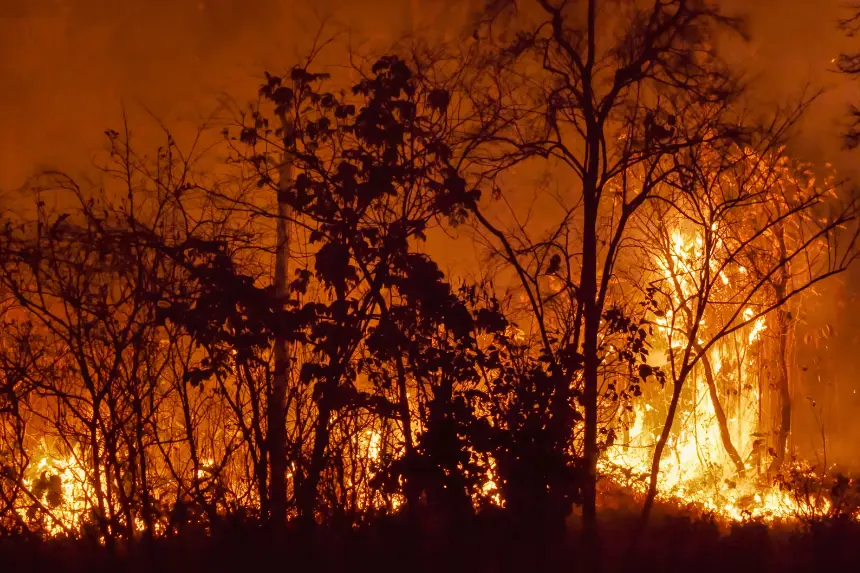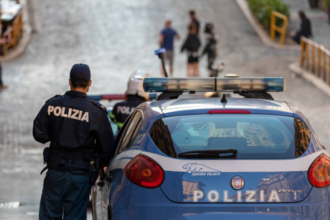The emergency response to the Crete wildfire began after a destructive fire broke out on Wednesday afternoon in rough, forested land near the town of Ierapetra in eastern Crete. The flames spread quickly and uncontrollably because of strong winds, dry plants, and very hot or cold weather.
- How are firefighting teams keeping the wildfire from spreading?
- What Areas Have Been Evacuated?
- What are the health and safety risks right away?
- What can people who live there and those who visit do right now?
- What help is being put into action?
- How does this crisis compare to others in Europe?
- What Is the Next Step?
Emergency services say that the fire started between the towns of Agia Fotia and Skinokapsala. Within hours, it had spread over six kilometres, putting hotels, rental homes, and important infrastructure, like a nearby petrol station, at risk, as well as residential areas.
Local officials said that the fire got worse because of strong winds that reached 8 on the Beaufort scale. These strong winds pushed the flames south towards coastal towns, making it necessary for officials to act quickly and decisively.
How are firefighting teams keeping the wildfire from spreading?
A large-scale emergency response to the Crete wildfire began right away. More than 155 firefighters, along with eight specialised ground teams and 38 fire engines, were sent to the area. These teams started fighting the fire from different directions to stop it from spreading to areas where people live.
Four helicopters dropped water all day, in addition to ground troops. Their work was very important in slowing down the fire in hard-to-reach areas of the mountains. Local governments also sent in heavy machinery and water tankers to help put out the fire.
Even with all the work that has been done, the rough terrain and thick, highly flammable plants are still big problems. Emergency workers said that it was hard to get to the important fire lines. In response, firefighting units have changed their focus from putting out fires directly to making strategic firebreaks around settlements that are at high risk.
In some places, a tactical withdrawal was ordered from the front line to protect people. Firefighters are still working overnight to strengthen barriers and keep an eye on the changing winds.
What Areas Have Been Evacuated?
The Crete wildfire emergency response went into full evacuation mode as the flames got dangerously close to a number of coastal towns. Police, firefighters, and local volunteers worked together to get about 1,500 residents and tourists out of Achlia, Agia Fotia, Galini, Ferma, and Koutsounari, which were at risk.
The 112 public alert system sent out emergency messages telling people to leave right away and head towards the safer inland area of Ierapetra. Some people who couldn’t get to their homes because of fire or smoke were safely taken by boat from beaches in the area that were affected.
About 200 people who had to leave their homes are now staying in an indoor sports arena in Ierapetra, where local officials and volunteers are giving them food, water, and basic medical care. Read another article on the Los Angeles Wildfire Investigation
What are the health and safety risks right away?
Health officials have put all of Crete’s hospitals on high alert because the air quality is getting worse, and breathing in smoke could cause breathing problems. At least four older people have already been sent to the hospital because they were having trouble breathing. The thick smoke that covers the area has made things dangerous by making it very hard to see and almost impossible to drive.
People have said that the air quality is “extremely bad,” and ash is falling all over a wide area. People who live there are being told to stay inside, seal their windows, and wear masks if they have to go outside. The police have shut down the main road near Agia Fotia and are telling people to stay home unless they have to go somewhere.
There have also been reports of power outages in some of the affected areas, such as Agia Fotia, which makes things even harder for both emergency workers and residents.
What can people who live there and those who visit do right now?
If you are in the area right now, the most important thing you can do is follow official instructions right away. Don’t try to go back to areas that have been evacuated until officials say it’s safe. Keep up with what’s going on by watching local news, emergency broadcasts, and alerts sent out through the 112 system.
If you’re in a safe place, stay inside and keep the windows and doors closed so you don’t breathe in smoke. If you have to leave, only take the things you need, like your ID, medicine, and water.
Tourists should call their embassies or consulates for help and keep an eye on their travel provider for news about changes or delays.
What help is being put into action?
More help is on the way to support the emergency response to the Crete wildfires. Seventeen firefighters and one specialised foot team from the 1st Special Forest Firefighting Unit (EMODE) are taking a ferry from Piraeus with five more fire engines. There are also 33 more firefighters and four EMODE teams coming in from Elefsina by plane.
Local governments are also stepping up to help by giving evacuees temporary shelter, food, and transportation. People from Ierapetra and nearby towns are volunteering to help those who have lost their homes by giving them blankets, supplies, and emotional support.
More and more people around the world are becoming aware of climate change, and climate experts are stressing the need for long-term planning for resilience. The fire in Crete isn’t just a one-time thing; it’s part of a larger pattern of extreme weather and fires in southern Europe.
How does this crisis compare to others in Europe?
The emergency response to the Crete wildfire comes at a time when heat-related disasters are happening more and more across Europe. In Turkey, more than 50,000 people had to leave their homes this week because of wildfires in the western province of Izmir.
In the meantime, heat waves have killed at least six people in Spain, France, and Italy. Meteorologists say that this summer could break records because of the high temperatures, dry weather, and strong winds, which make it easy for wildfires to start and spread.
Officials are telling all areas that are at risk to get ready and spend money on early warning systems and training for the community.
What Is the Next Step?
The situation is still dangerous, but the emergency response to the Crete wildfire is working at full capacity. Authorities hope to keep the fire under control in the next few days by sending in more troops, making plans, and getting the community to work together.
It’s very important to get people to support and know about it. You can make a real difference by sharing accurate information, supporting local aid groups, and staying up to date. One thing is clear as this crisis unfolds: we need to work together, both locally and globally, to deal with the effects of climate-related disasters like this one.








